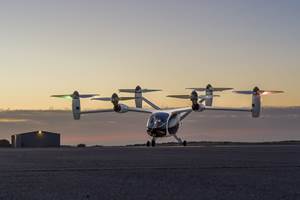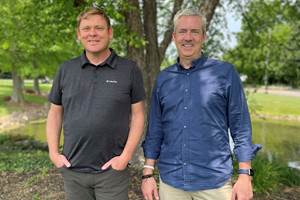Reading the Boeing tea leaves
Boeing CEO David Calhoun says not to expect a new aircraft before 2035. What are aerocomposites fabricators supposed to make of that?
Boeing CEO David Calhoun announced at the company’s Investor Day conference in early November that Boeing has no plans to announce a new aircraft program until almost 2030 and that the market should not expect a new aircraft from the company to enter into service (EIS) until 2035 at the soonest.
“I don’t want to fill a gap in a product line,” Calhoun said. “I want to build a product that’s going to differentiate in a way that absolutely substitutes the airplanes that came before it. That number has to be at least 20%, 25%, maybe 30% better than airplanes it replaces. And there are technologies and concepts that go with that, and underlying ways of building it that can get you to that answer, and they all take time, and they all have to be proven.”
He added, later: “...If it [a new aircraft] doesn’t have a sustainability wrapper all around it, if it can’t meet the emissions tests, if it can’t deliver significant performance advantages, then there won't be an airplane. It just won’t [happen]. We may not even be allowed to introduce an airplane that doesn’t do something like that.”
To provide some context: Boeing has spent much of the last three years very focused on righting the ship following two 737 MAX crashes, COVID-19 and a delay in 787 deliveries caused by anomalies in some composite fuselage sections. The 737 MAX is flying again, 787s are being delivered and air travel has steadily increased post-COVID, but Boeing is in a competitive struggle with Airbus.
The European planemaker maintains a comprehensive product portfolio, and the company’s long-range narrowbody A321XLR, introduced in 2019, is in great demand among customers, having racked up more than 500 orders. Boeing, by contrast, lacks a model to compete with the A321XLR, and is feeling pressure from customers to develop one.
Boeing needs a healthy supply chain as much as the supply chain needs Boeing.
So, a common question asked of Calhoun at any investor event is if and when Boeing will announce a new aircraft to compete with the A321XLR. Calhoun’s statement in November is the clearest he’s made on this topic.
Many aerospace industry observers and analysts have spent the last year trying to determine what Boeing’s timeline might be, operating under the assumption that Boeing appreciates the precarious competitive position it’s in and would move sooner than later to remedy that. Airbus certainly has a head start with the A321XLR, but if Boeing announced a new long-range narrowbody in 2024, it could have an EIS of 2032.
Calhoun’s rationale for not moving sooner on a new program boils down to his desire that Boeing’s next new aircraft be a differentiator — substantially more fuel efficient, wieth fewer emissions and a smaller carbon footprint. Anything less, apparently, is a non-starter. These certainly are admirable goals, but refusing in 2022 to even consider a new aircraft coming to market for another 13 years sends some bad signals.
The first bad signal is being sent to customers. They almost certainly want a more efficient and cleaner aircraft as much as Calhoun does, but they also want the option to buy a long-range narrowbody from a company other than Airbus. Further, airlines benefit from and prefer a competitive marketplace when making buying decisions, and Boeing’s abandonment of the middle of the market minimizes their options and leaves Airbus at a distinct advantage when it comes to aircraft pricing.
The second bad signal is being sent to the supply chain. Suppliers in the commercial aerospace industry — including composite material suppliers and composites fabricators — serve their customers most effectively if Boeing and Airbus have vibrant and active programs that drive innovation and help build product and technology diversity. What is an aerocomposites fabricator that has a history in the Boeing supply chain supposed to think of Calhoun’s statement? Boeing needs a healthy supply chain as much as the supply chain needs Boeing. If suppliers see limited benefit in remaining in the Boeing supply chain, they will naturally seek business elsewhere, with Airbus, Northrop Grumman, Lockheed Martin, Spirit AeroSystems and others. And they might not return.
With so much at stake and so much to lose, it is a genuine puzzle why Calhoun has staked this position. My hope is that it’s one Boeing will, eventually, reconsider. And, frankly, Boeing probably must reconsider this position if it wants to maintain its position as one of the preeminent aerospace OEMs.
Related Content
Back in the composites saddle
The CompositesWorld team looks ahead to upcoming composites industry events and opportunities for the remainder of the year.
Read MoreRevisiting the OceanGate Titan disaster
A year has passed since the tragic loss of the Titan submersible that claimed the lives of five people. What lessons have been learned from the disaster?
Read MoreHow composites have become a necessity
Composites used to be one of many material options across industries and applications, but that's not the case anymore.
Read MoreUp, not out: The next chapter of CompositesWorld
I have been editor-in-chief of CompositesWorld for 17 years, which translates into a lot of editorials. This will be my last as I become publisher of CW. We welcome Scott Francis back to the brand to take my place.
Read MoreRead Next
Plant tour: Daher Shap’in TechCenter and composites production plant, Saint-Aignan-de-Grandlieu, France
Co-located R&D and production advance OOA thermosets, thermoplastics, welding, recycling and digital technologies for faster processing and certification of lighter, more sustainable composites.
Read MoreAll-recycled, needle-punched nonwoven CFRP slashes carbon footprint of Formula 2 seat
Dallara and Tenowo collaborate to produce a race-ready Formula 2 seat using recycled carbon fiber, reducing CO2 emissions by 97.5% compared to virgin materials.
Read More“Structured air” TPS safeguards composite structures
Powered by an 85% air/15% pure polyimide aerogel, Blueshift’s novel material system protects structures during transient thermal events from -200°C to beyond 2400°C for rockets, battery boxes and more.
Read More























